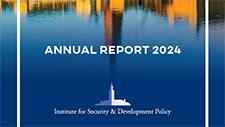Central Asia

Following several hundred years of relative isolation, Central Asia has re-emerged as an important region on the international scene. Its importance derives from its strategic location astride the main economic and political centers of the Eurasian continent. While this location poses significant challenges to the landlocked states of the region, it also presents opportunities for them and their neighbors, including the gradual re-emergence of land trade and transportation routes connecting Europe and Asia. ISDP uses a historical definition of Central Asia that goes beyond the five countries of Soviet Central Asia – Kazakhstan, Kyrgyzstan, Tajikistan, Turkmenistan and Uzbekistan – to also include Afghanistan and China’s Xinjiang-Uighur Autonomous Region.
ISDP’s activities on Central Asia, conducted within the framework of the Joint Center with the Central Asia-Caucasus Institute in Washington, D.C., focus on research and analysis of the political development and regional security in the region, Central Asia’s relations with the EU and U.S., as well as the increase in continental trade and transport. The Joint Center publishes the biweekly Central Asia-Caucasus Analyst, a leading sources of analysis on regional developments.
Related News
Related Publications
-
Armenia and the Belt and Road Initiative: Perspectives from Europe, the Caucasus, and Central Asia
This co-edited book analyses the opportunities and challenges enabled for Armenia by China’s Belt and Road Initiative (BRI) in the framework of economic cooperation, policy diversification, social inclusion, and regional […]
-
Is Central Asia Stable? Conflict Risks and Drivers of Instability
In 2022, violence erupted in four different areas of Central Asia. These episodes of violence were very different from each other, and all were contained within days or weeks. The […]
-
ISDP Annual Report 2024
ISDP’s Annual Report for the year 2024. 2024 has been a tumultuous year, in which tensions have been continuously mounting and conflicts have been raging. Many of these developments have […]
-
The Convergence of Disinformation: Examining Russia and China’s Partnership in the Digital Age
The spread of disinformation has been a longstanding issue since the establishment of communication between societies. It has been used as a tool to spread propaganda and deceive adversaries in […]
-
Central Asia in the Energy Transition
The United States, Europe, the United Nations and more are promoting a top-down energy transition from fossil fuels to renewable energy, which shows no signs of emergence. Under this scenario, […]




